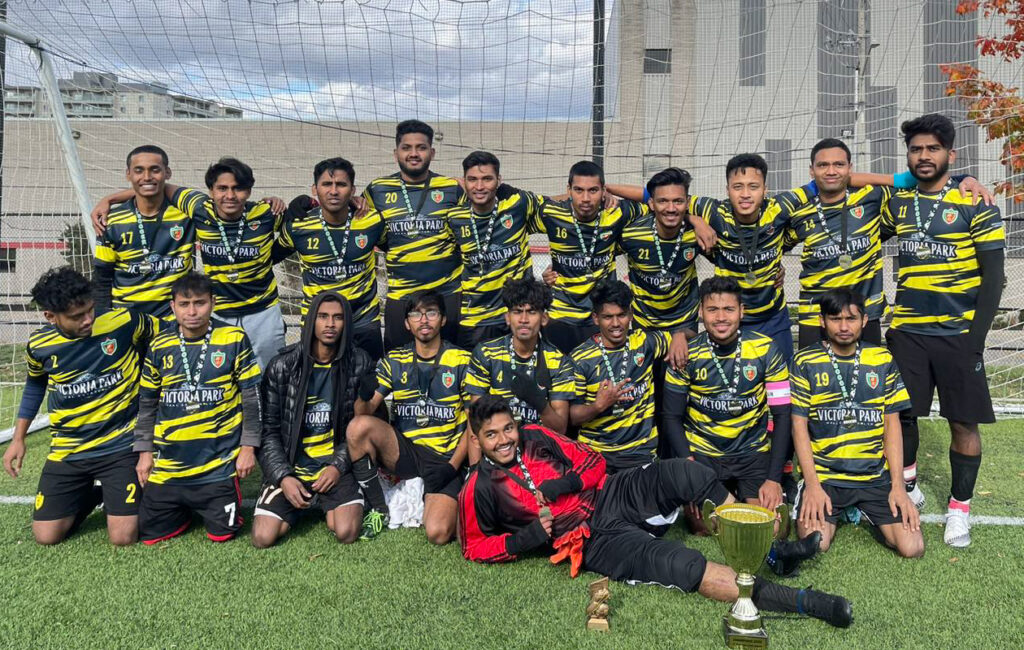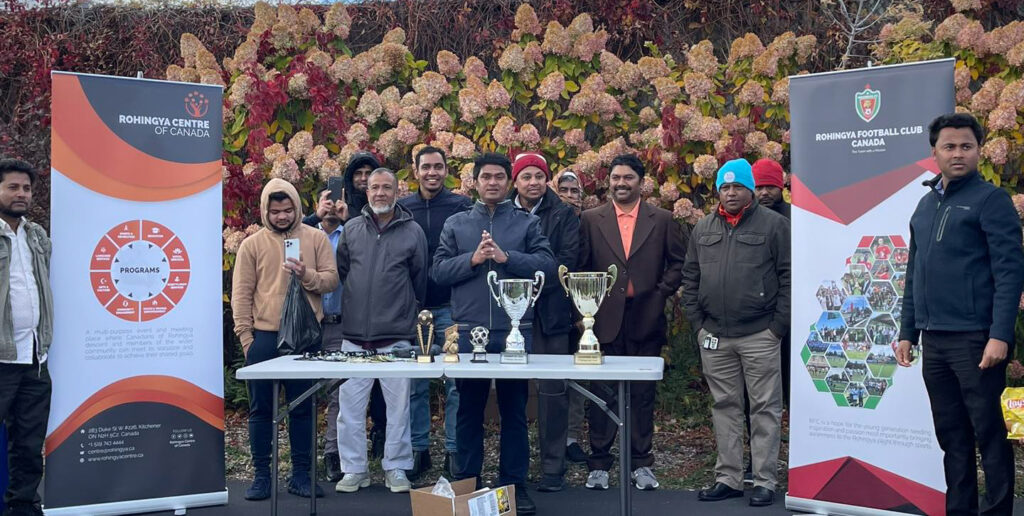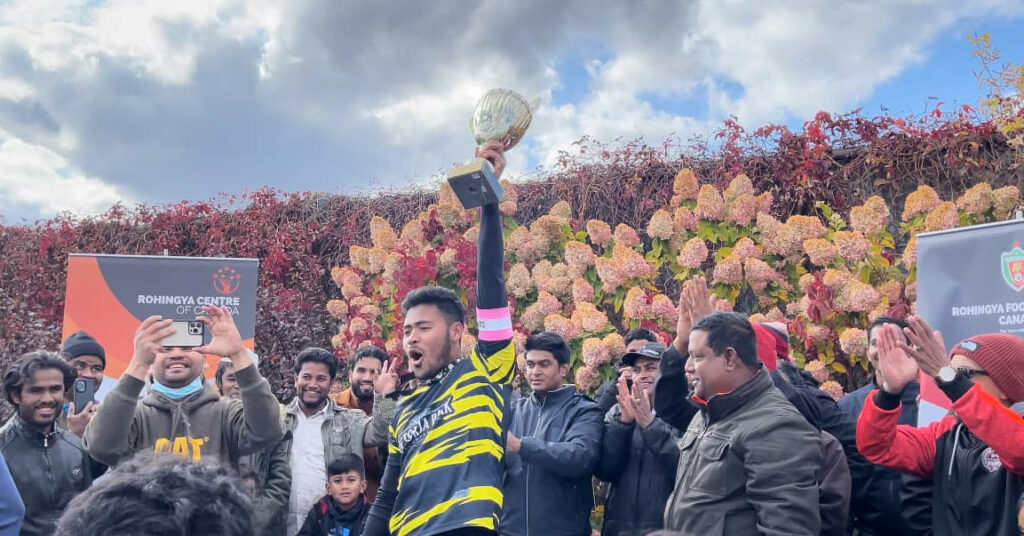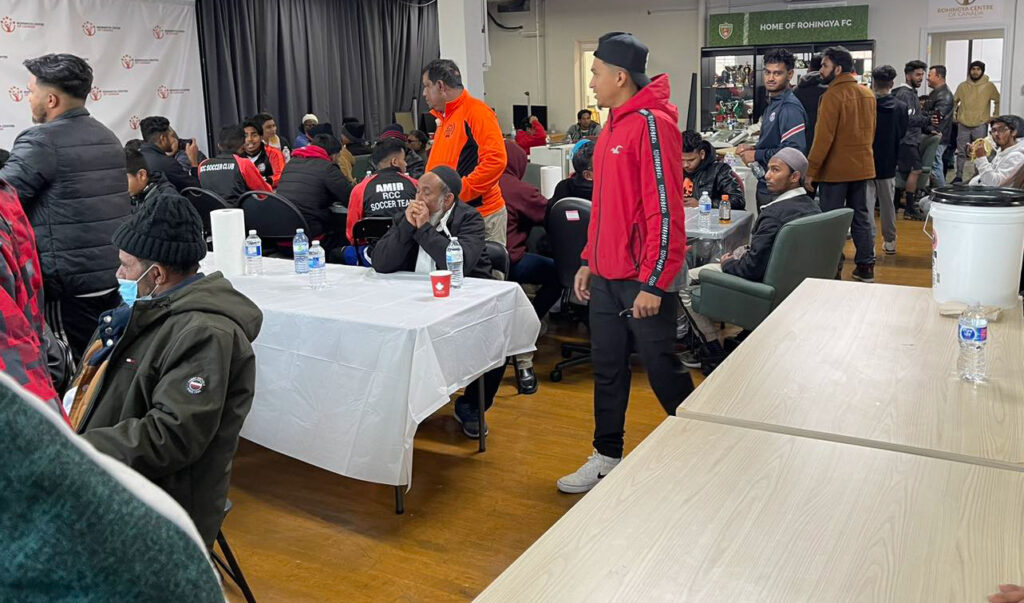The term “Rohingya” emerged from the word Rakhanga or Roshanga signifying the historic coastal region in South East Asia bordering the Bay of Bengal and Burma (now within Myanmar) also known as the state of Arakan. The usage of the term has been historically documented first back in the 18th century at the same time when the first version of Rohingyalish, the written language of the Rohingya people using Arabic script, was written. Later, under the British rules, Urdu, Farsi and English became predominant languages and contemporary scholars made attempts to capture the language in the respective Urdu, Burmese and Hanifi scripts; the last one being a new mixture of Arabic, Latin and Burmese-derived alphabets. Since the 1940s, however, the culture as much as the region has been continuously destabilized by a large number of armed insurrections. The six most recent military crackdowns forced the majority of the 1.4M Rohingya population, an estimated 700,000-900,000 people, out of Myanmar into Bangladesh and neighbouring countries. The UN officials and Human Rights Watch classified Myanmar’s treatment of the Rohingya as ethnic cleansing, “crime against humanity” and genocide due to executions, enforced disappearances, arbitrary arrests, detentions, torture and forced labour of Rohingya people.
Over the last several decades, Canada has invested considerable humanitarian and development assistance to Bangladesh and the Rohingya refugees. In 2017, Prime Minister Justin Trudeau appointed Canada’s Special Envoy to Myanmar and released the report providing several recommendations to be included with Canada’s S$300M Strategy to Respond to the Rohingya Crisis. Between 2006-2020 Canada resettled over 1000 Rohingya refugees. Although the target for Rohingya is not exactly known, in 2021 Canada is only half of meeting its goal of welcoming 81,000 refugees by the end of the year. As a part of our series, Chat with Rohingya Langauge Advocates, we talked to Zafor Alom, Rohingya interpreter and Saifullah Muhammad, Rohingya advocate and activist located in the Waterloo-Kitchener area (Ontario) about challenges with the settlement, particularly concerning language access as well as access to qualified interpreters.
_________________________________
Hello Zafor, welcome and we are excited to have this opportunity to speak with you. Please tell us a little bit more about your early days in Canada and what led you to become an interpreter.
Zafor: I came to Canada from Indonesia as a refugee. I lived in a refugee camp for six years without education. But there too, I felt I needed to help my community with language access and interpretation because most Rohingyas do not speak either Indonesian or English. In our camp, the IOM, which is the International Organization for Migration, organized our community focal point to help us with communication and interaction. This is how I have begun my journey. I worked with them for some time, and it is how I learned English. Eventually, I ended up coming to Canada with my family in 2019, and I arrived first in London, Ontario, and then we moved to the Region of Waterloo, where my friends and other Rohingya friends are living. I was lucky to come here where I am getting a lot of support from my colleagues, especially related to education and employment.
When I came to London, Ontario, I visited a settlement agency called Cross Cultural Learner Centre (CCLC) where I saw the people having difficulties communicating with their staff. Then I realized that I could work as an interpreter, actively removing language barriers for my community. In Waterloo, Ontario. I enrolled in a program called the Language Interpreter Training Program Program at Conestoga College in 2020 and I completed it in April of 2021. However, since then, I was not able to fulfill all requirements of my graduation because the language tests to confirm my Rohingya-English fluency are simply not available. It is something I was not aware of when I began my studies. At that time I was also the only person trained in this particular combination of languages. Our community does not consider interpreting as a lucrative career but if we are not able to get fully professional designation we cannot really find out if the profession could be profitable. We understand and acknowledge that the Rohingya language is not yet fully integrated in terms of writing conventions but our language is also evolving day by day too. To have an English to Rohingya testing system in place that other languages have, such as ILSAT* or CILISAT**, is very important, particularly when we work with vulnerable communities.
Saifullah, would you mind telling us a bit more about the Rohingya community here in Ontario and what kind of support currently exists for Rohingya people here.
Saif: I’ve been in Canada for about five years. When I arrived, in 2016, there were only 300 of us here in the Waterloo Kitchener area. I enrolled in the English program, and then I did my undergrad in journalism and Master’s in Peace and Conflict Studies at the University of Waterloo. Since day one, I feel that my life has been focused on repairing the “brokenness” of the system that is continuously failing the Rohingya community. The heart of it, the plight of Rohingya, is deeply rooted back in their homeland – Myanmar, Burma – where they have been still facing persecutions, discrimination, human rights abuses and ill-treatment by their government. As a result, access to even basic education for the Rohingya today is largely denied. Not only that they’ve lost everything – their community, the way of communicating, their language and livelihood, living as refugees in Malaysia, Indonesia, Thailand, Bangladesh, but they are not given an opportunity to educate the next generation to be able to better their lives. As a result, the available empirical evidence confirms that the Rohingya community in refugee camps, in comparison to other ethnic and language groups, is facing a rampant illiteracy rate that is now close to 95%. If they are resettled, as they have been accepted here in Canada, the integration could be more difficult and that includes young people too.
As I mentioned, we had a small Rohingya community here when I first arrived so we could easily help each other with translation and interpretation. Now, however, we have 600+ individuals in the Kitchener Waterloo area only. And more people are still arriving. Three families will be coming next week and they mostly speak only Rohingya. So now, not only that we are lacking interpreters but we don’t know of any staff, settlement workers in any area of the service provider agencies around here who speak our language. As a result, people are lacking some very basic information that negatively impacts the effectiveness of settlement and integration processes.
Seeing this as an ongoing issue, we have been trying to mobilize our youth, around fifty individuals who are currently engaged with various Canadian or NGO development initiatives. However, if we want to encourage them to the professional interpreter designation they would want to finalize their education with either ISLAT or CILISAT test or any other recognized language test. Otherwise, their language interest will remain on English language only and, as a result, our entire community will not only lose its vital, inter-generational cultural link but also access to critical information and services. Promoting community interpreters from within is important because those are the very people with a deep understanding of what the community is all about. They will be trusted, and likely more effective in helping with integration and settlement.
What kind of help does the Rohingya community need?
Saif: To be absolutely clear here, we are not asking anyone to “help us”. We are prepared and available to help our community ourselves, and to do that without compensation. But, as a community, as an organization working with youth, we also want our community and our youth to grow and prosper. For that very reason, we also established the Rohingya Cultural Center in Kitchener- Waterloo where we created opportunities for Rohingya community members not fluent in English to attend driving lesson classes in Rohingya or get access to other types of training or services other service providers offer. We also found that the greatest barriers people are facing initially in Canada are often language-related. For example, people would call us and say, I need a driving license, or I need a G 1 test, or I need to see a specialist – and I do not understand how I should do that. For many of those issues, you need a simple translation or the help of an interpreter. To develop a prosperous community we need to streamline the integration, and language is a big component of it, if not a foundation. Yet, I have a sense that many people from our community feel that they are not getting adequate support in that respect, are not being given the priority, not even being given consideration.
What is needed to have these testing systems in place?
Saif: Not much, in my opinion. The truth is that this issue just recently came to my attention and we did not do adequate work yet to approach agencies in charge of testing to see what can be done. It takes time for us to understand how the system works and there are many other pressing issues we face and have to deal with. We are pulled in different directions, and we neglect the fact that settlement often starts with language as much as it needs jobs and education. We need help from organizations and coalitions such as yours to help us address systemic barriers. We cannot do it alone.
Zafor: In my case, since our last conversation there were some exciting developments. The Conestoga College has been very helpful to our community since day one stepped up to clear me from the requirement of passing the test. They realized that I am the only trained Rohingya interpreter in this province, and they use their tools to help me move forward. It took many months to do that, and I don’t believe this is going to be a standard procedure for other interpreters. We still need testing in place and we need to follow a regular procedure. I am confident, however, that from the Rohingya community around the world we can generate a sufficient number of linguists to help us with the test creation and marking until we reach a critical mass of markers.
In terms of general language advocacy on behalf of your community, do you have any relationship with MPs or political representatives in the Kitchener Waterloo area?
Saif: Yes, we do. We met with Prime Minister Trudeau many times as well as with the past Minister of Immigration, Refugees and Citizenship and current Minister of Diversity, Inclusion and Youth of Canada, Ahmed Hussen. We also had an opportunity to meet with the new immigration minister Sean Fraser just days ago. But maybe we are not utilizing these connections as much as we could. Language is intersectional and sometimes forgotten.
I am sure you do a lot for your community. The final question, however, is for you, Zafor. If this barrier, having ILSAT or CILISAT in the Rohingya language would be removed, how many potential interpreters could be recruited from your community and how that would change what you are experiencing now.
Zafor: It is very difficult to answer this question because although we have people with interest we cannot mention an outset amount of how many people would come forward. At the moment there are a lot of us who are doing interpretations pro bono calling ourselves “ad hoc interpreters”. If the tests would be available we hope that many Rohingya, inclusive of youth currently involved with community work, could supplement their income by doing professional interpretation.
However, another positive development I could mention is the contribution of 10 Professional Interpretation Program scholarships offered to us by MCIS Language Solutions Community Benefit Fund, and we hope that this very first cohort of new Rohingya interpreters will plant a seed for not only seamless provision of services to Rohingya community in the future but also deepen the recognition of interpretation as an essential settlement service. We also appreciate the interest different organizations such as the Language Access Coalition of Canada and Across Languages have in helping us advocate for our cause because it expands our perspective.
My focus, besides doing interpretation, is also on collecting language user testimonies because I feel that by having and sharing stories we can help people to relate and put a human face behind the numbers. In other words, I am hopeful.
Special thanks to Amal Dweik and MCIS Training and Vendor Management team, who provided a lead for this story and advocated for the creation of the MCIS Rohingya Cohort and ILSAT Test. The details pertaining to the Cohort will be announced on February 22. To help the Cohort to achieve a full professional recognition as soon as possible, Across Languages decided to make the test available to the public in May, 2022.
________________________________________________________
* The Interpreter Language & Skills Assessment Tool (ILSAT) is designed to test an individual’s skills in English and another language, as well as the ability to perform competently, at an introductory level, consecutive interpretation and sight translation. It is a test marked by Across Languages in London, Ontario, and administered by LIS Agencies. The ILSAT language certification test is currently available in 65 languages.
**In 1994, at the request of Ontario’s Ministry of Citizenship, Culture and Recreation, CISOC developed the Community Interpreter Language and Interpreting Skills Assessment Tool (CILISAT) to evaluate the language and interpretation proficiencies of people applying for certification as community interpreters. The CILISAT offers recruiters and service providers a snapshot of an individual’s current ability in consecutive interpreting and sight translating in any of 50 languages and dialects. CISOC manages and administers CILISAT certification in these 50 languages throughout Canada.







